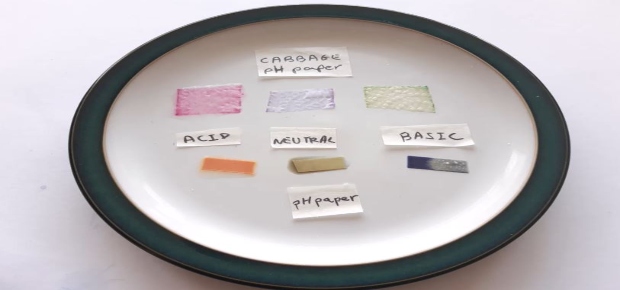pH Paper Part 2 - Make your own pH Paper!
Secondary | Materials | Views: 1554
You will Need:
- Red cabbage (contains pigments that give fruits, veg and flowers their dark colour)
- Tap water
- Blender
- Tea strainer or sieve
- Glass jar
- Acid, neutral and basic solutions, such as vinegar, water and laundry detergent
- Test tubes, or small glasses, labelled acid, neutral and basic
- Pipettes or straws
- Funnel
- Kitchen towel cut into strips
What to Do:
- Tear red cabbage leaves into small pieces and add them to the blender with 1 cup of water. Blend to extract the pigment from the leaves.
- Put the blended solution through a tea strainer or sieve to make sure you remove any pieces of cabbage leaves.
- Place 2-3 tablespoons of red cabbage liquid into each test tube/glass labelled acid, neutral and basic.
- Add a few teaspoons of the liquids you are testing to each test tube/glass. Do you notice any colour changes? Acidic = red/pink colour, Neutral = purple colour remains, Basic = green colour
- To make the pH paper, use the strips of kitchen towel and dip it into the cabbage liquid. Leave it out to dry.
- To use your homemade pH paper, simply add a couple of drops to your kitchen paper and check for colour changes!
- Take photos immediately if you are recording results, when the colour change is most obvious.
- Don’t have red cabbage? Choose a red/purple coloured fruit, veg or flower to create similar results. Check out a list of examples in the video and to see the colour changes.
« Back
 Go to Canterbury Christ CHurch University's website
Go to Canterbury Christ CHurch University's website
 Go to Canterbury Christ CHurch University's website
Go to Canterbury Christ CHurch University's website
